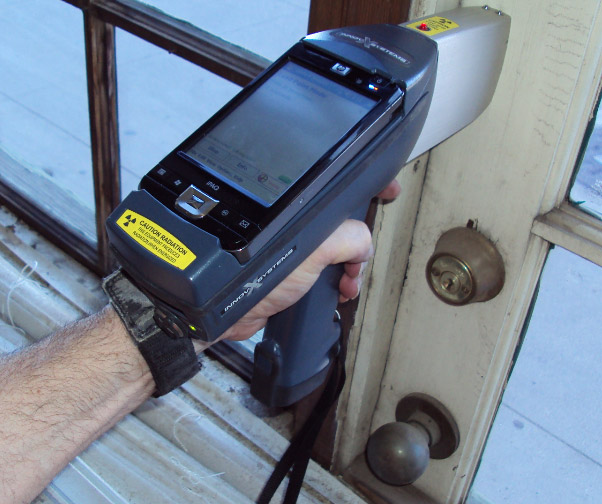Lead Removal Contractors-- Experienced Specialists for Lead Abatement
Lead Removal Contractors-- Experienced Specialists for Lead Abatement
Blog Article
Important Devices and Methods for Effective Lead Offense Clean-up
Resolving lead infractions successfully requires a comprehensive strategy that mixes the right tools with tactical approaches. The very first step includes equipping workers with Personal Protective Devices (PPE) to guard their health and wellness. Concurrently, making use of specialized clean-up devices, such as HEPA vacuums and lead-specific cleansing agents, is important for extensive impurity removal. Efficient containment approaches, including plastic sheeting and adverse air stress systems, are vital to prevent the spread of hazardous materials. Secure disposal techniques and stringent adherence to regulatory standards make sure accountable handling of toxic waste. However what are the nuanced methods that absolutely make a difference?
Individual Protective Equipment
Personal safety equipment (PPE) is an essential part in the reliable management of lead contamination clean-up. The important PPE for lead cleaning consists of respirators, safety garments, gloves, and eye protection.
Respirators, especially those equipped with HEPA filters, are indispensable for filtering system airborne lead bits, preventing breathing. Protective apparel, including coveralls and disposable matches, prevents lead dust from adhering to workers' garments, lowering the risk of additional contamination.
In addition, strenuous training on the right usage and maintenance of PPE is essential. Workers should be educated on putting on and doffing treatments to avoid contamination. Normal inspections and substitutes of PPE parts are necessary to preserve their safety capacities, making certain a risk-free and compliant cleaning operation.
Specialized Cleanup Equipment

Another crucial tool is the wet/dry vacuum cleaner, which can effectively clean up both dirt and liquid impurities. These vacuums usually come with HEPA filters to provide an extra layer of security. Damp cleans or tack towels are additionally crucial for surface cleaning; they are particularly created to record and hold lead fragments, decreasing the risk of spreading out contamination.
For more persistent down payments, specialized lead-removal cleaner are needed. These agents are developed to break down lead particles, making them less complicated to get rid of. Scrub brushes with tough bristles can assist in this process, especially on rough surfaces where lead dust often tends to stick extra highly.
Furthermore, encapsulants are used to secure lead-contaminated surfaces, stopping the launch of lead dirt. These specialized paints and layers are developed to adhere to different substrates, supplying a long-lasting remedy for lead control.
Efficient Control Techniques
Efficient control techniques are critical in minimizing the spread of lead contamination throughout clean-up activities. Applying robust control approaches makes certain that lead particles do not migrate to untouched areas, consequently securing both workers and the setting. One key method is the use of plastic sheeting to secure off contaminated zones. Sturdy polyethylene obstacles can be mounted from floor to ceiling to develop a regulated workplace, substantially decreasing the threat of airborne lead dust dispersal.

To boost control, encapsulants can be related to surfaces that are not being gotten rid of or disturbed. These look these up specialized finishings bind lead dirt, minimizing its accessibility for resuspension. In addition, all employees need to put on appropriate Personal Protective Tools (PPE), including respirators and disposable suits, to stop contamination spread.
Safe Disposal Practices
Guaranteeing secure disposal methods is an essential part in the management of lead contamination clean-up. Correct disposal minimizes the risk of lead returning to the atmosphere and jeopardizing public health and wellness. The very first step is to recognize and segregate lead-contaminated waste from other materials. Safe control using durable, leak-proof containers is important to stop splilling throughout transportation.
Carrying lead waste calls for adherence to strict guidelines. Making use of qualified contaminated materials carriers guarantees that the materials are managed properly. Paperwork, including shows up outlining the kind and quantity of waste, ought to accompany shipments to track the waste from the website of origin to its final disposal destination.
Designated harmful waste disposal facilities are furnished to manage lead-contaminated materials safely. These facilities typically use advanced methods such as stabilization, solidification, or chemical therapy to neutralize the lead prior to disposal. Landfilling in specialized, lined locations that protect against leachate from contaminating groundwater is an usual practice for last disposal.
Routine training for workers associated with lead garbage disposal is critical to maintain safety and security standards and protect against unintended direct exposure. By adhering to these her latest blog techniques, organizations can significantly lower the environmental and wellness influences related to lead contamination.
Regulatory Conformity Tips

Following regulatory compliance is paramount in the successful implementation of lead contamination cleanup. Comprehending and complying with federal, state, and local policies makes sure not just the security and wellness of people yet also the legal and economic well-being of the cleaning company. The Epa (EPA) sets rigid requirements, such as the Lead Restoration, Repair, and Painting (RRP) Rule, which mandates correct accreditation and training for contractors taking care of lead-based activities.
Compliance begins with a detailed evaluation of suitable legislations and guidelines. Organizations needs to stay updated on any legislative adjustments, Resources which can be promoted via normal training sessions and signing up for market updates. Paperwork is another essential conformity aspect; keeping detailed records of all activities, consisting of evaluation reports, employee training logs, and disposal manifests, is necessary.
Moreover, engaging with accredited lead assessors or run the risk of assessors guarantees that lead dangers are properly determined and mitigated. Companies need to apply using Personal Safety Equipment (PPE) and make sure that security procedures are purely complied with. Transparent communication with stakeholders, including staff members, clients, and regulatory bodies, will certainly foster a culture of compliance and liability, inevitably adding to a much safer and extra effective lead cleanup procedure.
Verdict
Efficient lead infraction clean-up demands the combination of specialized devices and calculated methods to make sure safety and effectiveness. Using HEPA vacuum cleaners, specialized cleansing representatives, and effective containment techniques such as plastic sheeting and unfavorable air stress systems is crucial. Individual safety devices (PPE) safeguards employees from direct exposure, while secure disposal practices and rigorous adherence to regulative compliance are important for sensibly taking care of hazardous waste. Jointly, these steps significantly alleviate wellness dangers and contribute to a cleaner environment.
Report this page